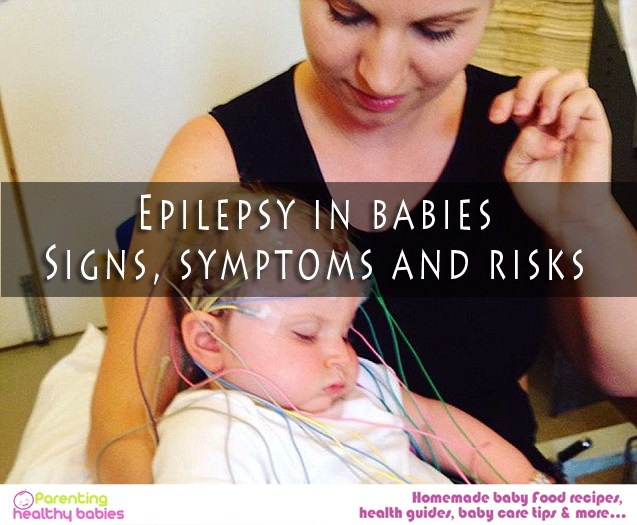A reflex is a type of involuntary action. Newborn babies display a number of reflexes. For example grasping, suckling, etc. Physicians can observe reflexes and so can you. Moro reflex is the one in which babies put out their limbs as a reaction to their surroundings. It is also known as a startle reflex. In this article, you will get some pointers on how to handle a baby’s Moro reflex and what it is.
Read More: All You Need to Know About Stepping Reflex in Babies
In this article:
What is Moro Reflex?
Why Does the Moro Reflex Occur?
How to Identify the Moro Reflex?
Common Triggers
How to Calm the Baby?
Steps to Swaddle a Baby
How Long Does it Last?
When You Should be Concerned
Moro Reflex in Babies: Things Every Parent Should Know
What is Moro Reflex?
Moro reflex involves your baby suddenly being startled, spreading his/her arms and bringing them back close to the body. It is involuntary and normal. The baby may or may not cry during it. There is no way to completely stop it by yourself, it stops on its own.
Why Does the Moro Reflex Occur?
Believe it or not, it’s designed to protect your baby. A newborn is still unaware of the changes in their surroundings after spending 9 months in a womb. This reflex helps prevent the overload of senses. At first, the baby has a change in expression and then spreads their arms outwards, as if throwing them suddenly, then brings arms back close to their body. This reflex acts as a barrier to protect the undeveloped nervous system of the newborn.
How to Identify the Moro Reflex?
The baby is shocked and has a reaction to any sudden sound, light or movement even if it’s their own. The fingers are extended outwards, the neck and spine are stretched. He/she bend their head backward. Then, brings the limbs closer to their body again, and then the limbs return to sides.
Read More: Parachute Reflex in Babies: Everything You Need to Know
Common Triggers
Increased intensity of light, loud noises or sudden movements may trigger the Moro reflex. The baby’s own sudden movements or noise may end up triggering it. The baby may feel he/she is falling when someone picks him/her up and this may also be a trigger. A newborn baby is not yet used to his/her new surroundings and is easily startled.
Head drop test: In this, place the baby on a soft padded surface. Then lift the baby’s head with enough support and then lower the baby’s head suddenly, slightly to simulate the sensation of falling. The baby’s head should not hit the padding. A positive Moro test is when the baby extends the limbs outward in a grabbing motion and brings them back in response to the simulation, and the positive Moro test at the time of birth is considered normal.
How to Calm the Baby?
- Calm the baby by cradling and holding them close to yourself, away from excessive external stimulus like noise, too much light.
- The baby’s limbs which are spread out must be delicately moved towards their
- Support the baby’s head and neck while holding them in a gentle manner.
- Swaddling the baby with a lightweight blanket.
Swaddling is wrapping a baby in a light blanket. The baby is wrapped up in a warm cocoon helping it to sleep peacefully and prevent the Moro reflex.
Steps to Swaddle a Baby
- A light blanket should be placed below the baby. One corner should be pointing up.
- Fold the upper corner of this light blanket. Put the baby’s head gently on it.
- Place the left arm alongside the baby’s body and fold the left side of the blanket over the baby, tuck it under the right side.
- Now place the baby’s right arm along the right side of his body and fold the right side of the blanket over the baby’s body, tuck it under the left side.
- Fold the bottom corner upwards, leaving space for movement of the baby’s feet, do not wrap it too tight.
- It is important to follow a safe swaddling technique, so as to not do anything that will increase the discomfort of the baby and further disturb it, wrapping the baby too tight, which might lead to the chance of SIDS occurring.
- If you don’t want to put the baby in a wrap, consider placing the baby very gently while keeping it down to rest, and be extra careful while handling it to not surprise it any further.
National Institute of Health recommends that babies should not be swaddled if they are able to move around slightly by themselves, because it increases chances of SIDS (sudden infant death syndrome) if the baby rolls over on its stomach.
Read More: Swaddling a Baby: Benefits and Safety Tips
How Long Does it Last?
The reflex gradually starts disappearing from the 4th month. The baby will get aware of its surroundings and not be surprised so often. It will also be more in control of its movements from the 6th month onwards.
When You Should be Concerned
Moro reflex is absent or present abnormally, could be an indication of a number of health issues. The premature disappearance or complete absence of Moro reflex can be due to asphyxia during birth, intracranial hemorrhage, brain malformation, general muscular weakness, cerebral palsy. A birth injury may also cause the abnormality of this reflex.
Moro reflex can be asymmetrical, that is, it is present on only one side and absent on the other one. It is an indication of a local injury such as damage to peripheral nerve cord, brachial plexus, fractured clavicle which the baby won’t be able to communicate, hence the reason reflex tests exist.
A prolonged Moro reflex may be a sign of cerebral palsy of spastic type. Increased muscle tone prevents excessive movements of the baby.
Conclusion
A doctor can help recognize what is normal and what is not. Do not make the assumption yourself. If you have any doubt, visit a physician who will help shed some light on the issue. Moro reflex is a good sign in babies, but sometimes it can be a lot for the baby. It can interfere with sleep and an overactive Moro reflex can disturb the baby and not let it get enough rest.
References
www.healthline.com
www.medicalnewstoday.com
www.kidshealth.org













